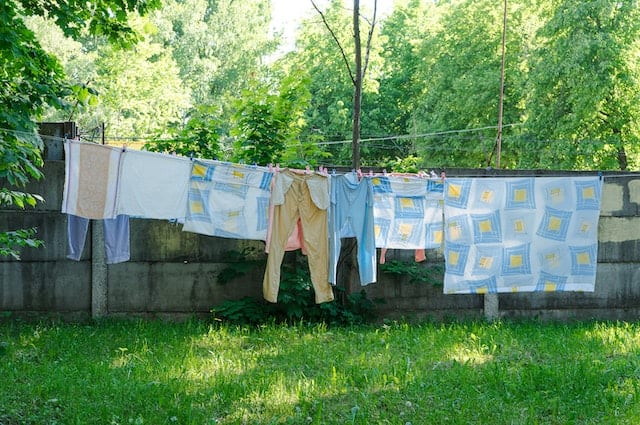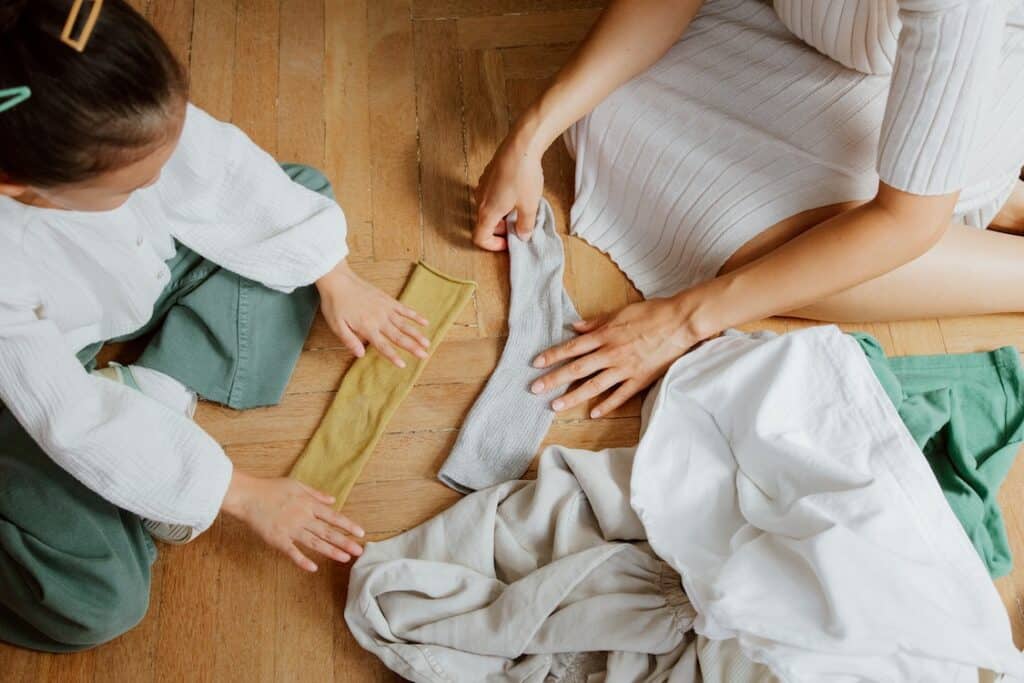Children grow quickly and their wardrobes can quickly become disorganized. Here are a few tips for keeping clothing items looking like new.
Sort through your kids’ clothes at least twice annually, separating those to donate from those that can be handed down, then store them in clearly labeled bins according to size.
Washing
Washing clothes is one of the key elements in maintaining your child’s wardrobe. By using the appropriate washing techniques, your little one’s clothing will remain looking like new for as long as possible and remove dirt and grime that could harm their delicate skin.
Step one of proper washing is reading each garment’s label to understand how it should be washed. This will ensure you avoid damaging or shrinking fabric while providing insight into whether other items in the washer can safely wash with it. In addition, labels might specify washing with like colors or turning inside out before washing for optimal results; following such instructions could prevent color bleeding and further wear damage on garments.
Your child should always wear clothing as directed, including following care instructions for washing it separately. Doing this will protect their delicate clothing from dyes and chemicals found in other laundry detergents, while it’s advisable to separate whites, darks, and lights separately when doing your laundry load. Likewise, cloth diapers must also be treated differently from all other laundry in order to reduce missing-sock syndrome and ensure they remain free from fecal material build-up.
Once your clothes have been washed, make sure that you rinse them well in order to eliminate any leftover soap residue and avoid irritating your baby’s delicate skin. It is wise to forgo fabric softeners and dryer sheets as these may leave behind residue that can lead to allergic reactions on their sensitive skin.
If your child’s clothes have become stained with milk, formula, food, or urine stains that refuse to wash out easily, soak them in cool water with an enzyme-based prewash stain remover before washing them – this should help get rid of stubborn stains caused by milk, formula, food or even blood and urine stains.
Once your clothes have been washed and are clean, they must be dried properly to protect them from becoming frayed and worn out. Hang-drying 100 percent cotton clothing is recommended. However, if using a dryer instead, be sure to set it on low heat only when temperatures allow it.
Drying

Kids can quickly soil their clothing. From poop, spit-up, and food spills to regular outfit changes – it’s no secret that laundry is one of the most time-consuming and costly household tasks – yet there are ways to decrease its frequency.
As soon as possible, purchase clothing made of stain-resistant fabrics. Choose darker hues if possible; darker tones will help conceal stains better than lighter tones. Also, keep shoes and other accessories in mind that could trap dirt.
Now, wash your child’s clothes properly by following the care instructions listed on their label, particularly with delicate items. Cold water should always be preferred over warm or hot as hot or warm water can cause fabric shrinkage or damage materials; make sure you rinse all detergent residue off afterward to ensure all are gone from their fabric.
Once your toddler’s clothes are clean, be sure to store them correctly in order to prevent dust or humidity damage. Separating clothes by season and size will make it easier for you when dressing your child.
Finalize the process by properly drying your child’s clothing. Hang delicate items, such as sweaters and lacy dresses, up for air drying; other items can be tumble dried on low heat setting with mesh bags similar to lingerie bags in order to prevent stretching or pulling of shapes during drying.
Take steps to care for your children’s clothing so they will last longer, saving money on replacements while lengthening their current wardrobe’s lifespan. Follow these simple tips and you can keep their wardrobe looking like new for as long as possible; maybe one day even long enough for them to use as hand-me-downs with their own children!
Ironing
Ironing clothes is an effective way to keep them neat and tidy, but it is crucial that it be done correctly. Ironing should go beyond simply eliminating wrinkles; it should also remove detergent residue that has accumulated on fabrics due to washing with gentle detergents – leaving fabrics stiff and scratchy even though washed gently – ironing will clear it all away, returning your child’s clothing back to a soft and smooth state.
Ironing children’s clothes regularly will ensure they look neat and fresh while reducing your workload. When sorting fabrics to iron, be sure to organize by fabric type – different fabrics require different temperatures for ironing – saving both time and money in the long run.
Some parents may prefer not ironing their child’s clothes, though that is ultimately up to them. Others find that it helps maintain an organized home and enjoy seeing perfectly pressed garments on display. There are certain sewing techniques and projects which require ironing – it would be advisable for all involved to learn how to iron correctly!
When ironing clothes for children, it’s essential that you start off with a clean and sharp blade and maintain an ironing board free from dust or dirt. After finishing ironing your garments, let them cool before placing them back into their respective drawers – keeping an ironing board away from clothing can prevent overheating, potentially ruining them in the process!
Ironing clothes for your child should take place in a clean, well-lit room with secure ironing boards that won’t tip over easily. Take extra care not to over-iron – as excessive ironing could damage fabric fibers, it’s best to iron slowly and carefully. Furthermore, keep children away from irons during use; touching or pulling on them could prove dangerous!
Storage

As you sort through and organize your children’s clothes, it is wise to find some kid clothing storage somewhere within the home. A hallway closet, garage, basement, or attic are great places where you can put away clothing bins that no longer belong to your child.
When it comes to storing clothing that your child no longer wears, it’s best to organize them into different bins. Label one bin “clothes my child has outgrown,” and label another “next size up” bin to store clothing items that may fit better later.
Keep a third bin designated “clothes I would like to save for my next child”, this can help save money when shopping for your next baby’s wardrobe. Once their next child outgrows their 5t size clothing, pull out these bins to use for future children or donate.
Cleaning out the “next size up” bins regularly and disposing of any worn-out or torn items should also be part of this task. In addition, it may be beneficial to wash clothes before placing them back into storage to reduce any risk of leaving dirty clothing out for too long.
Keeping any sentimental items such as jerseys or onesies you want to keep should also be placed into its own separate bin, to prevent you from buying new clothing for future children due to holding onto old pieces which no longer fit! This will also help save on clothing costs in case the current ones no longer do!
Establishing a system for keeping track of your kids’ clothing will keep them looking neat and stylish. Store all items properly to extend their life span and maximize appearance when the time comes for them to wear them again.




